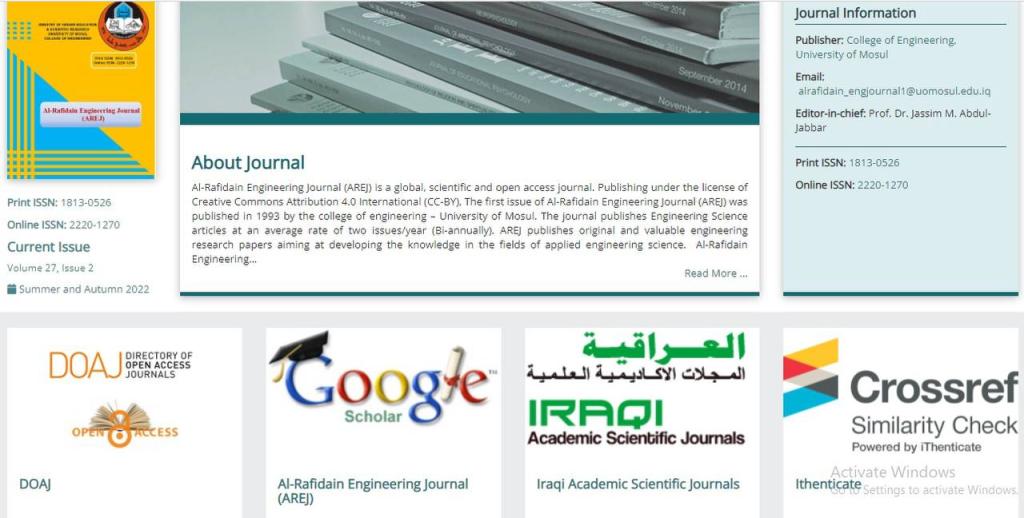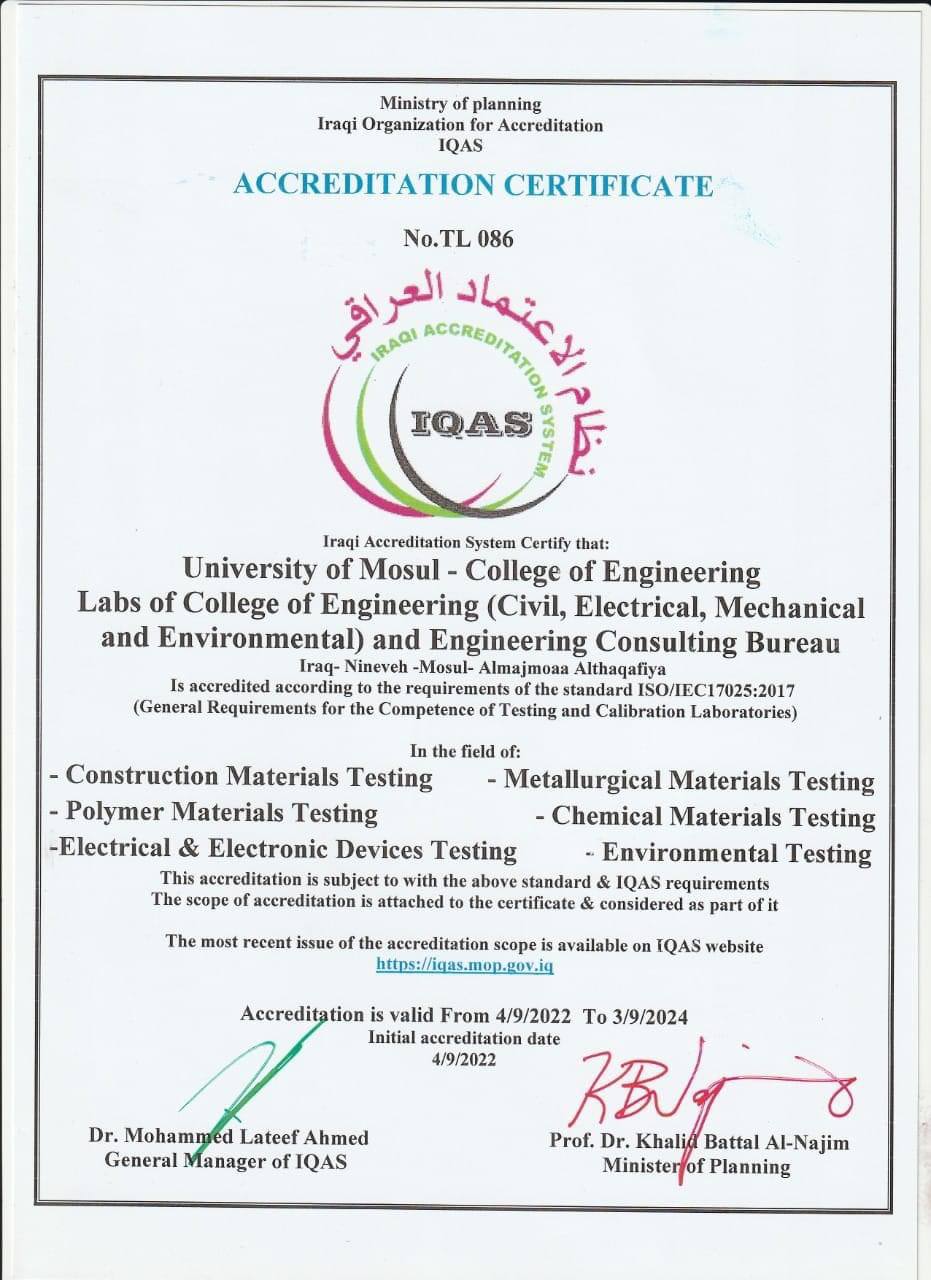7 February، 2022
Master Thesis on “A study of fixing rebar with Different diameters in reinforced concrete with different compressive strength”

A master thesis was discussed in Department of Civil Engineering / College of Engineering / University of Mosul entitled “A study of fixing rebar with Different diameters in reinforced concrete with different compressive strength” submitted by (Zahraa Salah Salim), Supervised ByAssist. Prof. Dr. Suhaib Yahya Kasim and Dr. Oday Asal Salihon Monday, Feb. 07, 2022.The thesis included four variables (rebar diameter, embedding length, concrete compressive strength, and the hole condition dry and wet). Where the study was conducted on concrete blocks with four compressive strengths (fcu=23,27,40,46) N/mm2 with dimensions of (L=2000, W=2000, H=400) mm, and four reinforcement bar diameters are used 12,16,20,25) mm post installed in the concrete base with embedding lengths(10,15,20,25,30,35)cm, and the chemical adhesive Sikadure-31was used for the purpose of fixing rebar. The holes were drilled in the concrete blocks and fixing rebar in dry and wet concrete condition.The thesis focused on the behavior of the post-installed bars using a pull-out test and the influence of the studied variables on the pull-out load and failure mode. The research methodology included three parts. The first one includes studying the effect of the research variables on the pull-out load, where the results showed that the increase in the embedding lengths reduced the values of the difference in the pull-out load between the dry and wet conditions and the moisture of the holes had greatly affected on the bonding strength.The second part included studying the effect of variables on the bond stress. It was found from the results obtained that there was decreasing in bonding stress with the increase of the embedment lengths due to the increase in the contact area exposed to the pull-out force. The third part dealt with the study of failure modes for each compressive strength; the test showed that the 10 cm embedment length gave a failure in concrete with a bond failure between the concrete surface and the bonding material for large diameters of the bars 20mm and 25mm. In the case of the concrete cone’s bond failure, the height of the concrete cone in the dry holes was greater than its height in the wet holes and the diameter due to the effect of moisture. The failure modes for large diameters were a concrete failure or splitting cracks, while for the diameters of 12mm, and 16mm, concrete failure with rebar elongation or steel failure.





















